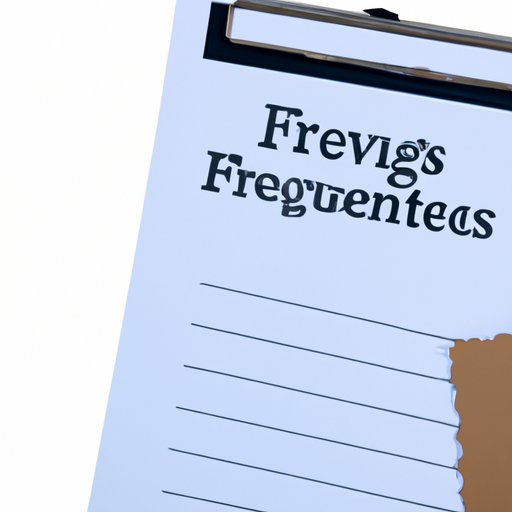
Introduction
If you’re struggling to pay off your student loans, you’re not alone. The good news is that there are programs designed to help borrowers who have difficulty repaying their loans. Student loan forgiveness is one of these programs, and it can be a huge help to borrowers who meet certain criteria.
In this guide, we’ll take a closer look at the student loan forgiveness program, including the different types of forgiveness available, the application process, and how to maximize your eligibility for forgiveness. This guide is designed for borrowers who are struggling to pay off their loans and want to learn more about how student loan forgiveness works.
Basic Requirements and Types of Forgiveness Programs
Student loan forgiveness programs typically have certain criteria that borrowers must meet in order to be eligible. These criteria can vary depending on the program, but some of the most common requirements include:
- Employment in a certain field
- Making a certain number of payments
- Meeting income thresholds
- Having certain types of loans
There are several different types of student loan forgiveness programs available, including:
- Public Service Loan Forgiveness
- Teacher Loan Forgiveness
- Loan Forgiveness for Medical Professionals
- Income-Driven Repayment Plans
Each program has its own advantages and disadvantages, so it’s important to research each one carefully to determine which one is the best fit for you.
Navigating the Application Process for Forgiveness
The application process for student loan forgiveness can be complicated and time-consuming. Here’s a step-by-step guide to help you navigate the process:
- Determine which program you’re eligible for
- Gather all necessary documents, including tax returns, pay stubs, and loan information
- Submit your application by the deadline
- Check your application status regularly and follow up if necessary
It’s important to keep in mind that the application process can take several months or even years, so it’s important to be patient and persistent.
Adjusting Payment Plans to Maximize Eligibility for Forgiveness
Adjusting your payment plan can help increase your eligibility for forgiveness. Some payment plan options include:
- Income-driven repayment plans
- Loan consolidation
- Extended repayment plans
It’s important to note that changing your payment plan can also come with drawbacks, such as increasing the total amount you’ll pay over the life of your loan.
Success Stories and Strategies for Achieving Forgiveness
There are many success stories of people who have achieved student loan forgiveness. Some strategies and resources they used include:
- Joining a forgiveness program early in their career
- Making extra payments to reduce the total amount owed
- Working with a student loan expert
You can apply these strategies to your own situation by researching forgiveness programs and seeking out expert advice.
Avoiding Common Pitfalls that Could Affect Forgiveness Eligibility
There are several common pitfalls that could prevent you from qualifying for forgiveness, such as:
- Missing payments
- Failing to meet program requirements
- Consolidating your loans before exploring forgiveness options
To avoid these pitfalls, stay on top of your payments and requirements, and always do your research before making any major decisions about your loans.
FAQ Section
Here are answers to some common questions about student loan forgiveness:
- Q: Will I have to pay taxes on the amount forgiven?
- A: In many cases, the amount forgiven will be considered taxable income. However, there are exceptions for certain programs, such as Public Service Loan Forgiveness.
- Q: What are my options if I’m in financial distress and can’t make my payments?
- A: There are several options, including deferment, forbearance, and income-driven repayment plans. It’s important to reach out to your loan servicer as soon as possible to explore these options.
If you have additional questions, be sure to reach out to a student loan expert or consult the Department of Education website.
Conclusion
Student loan forgiveness can be a huge help to borrowers who are struggling to pay off their loans. By understanding the basic requirements, navigating the application process, and maximizing your eligibility, you can increase your chances of qualifying for forgiveness. Remember to do your research and seek out expert advice if you need it.
If you’re eligible for student loan forgiveness, don’t hesitate to take advantage of it. It could make a huge difference in your financial future.
For more information, check out resources such as the Department of Education website or consult with a student loan expert.





